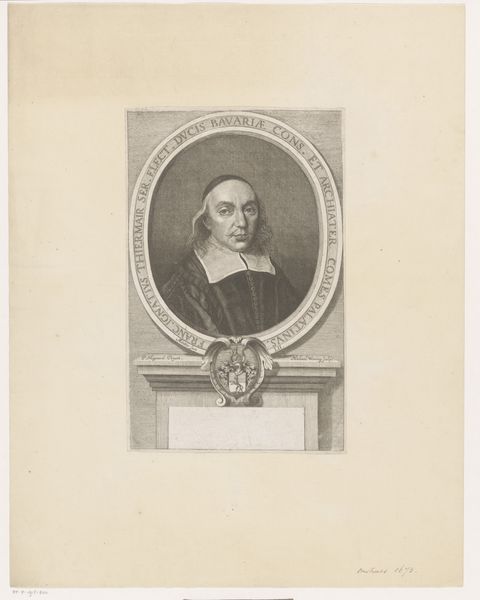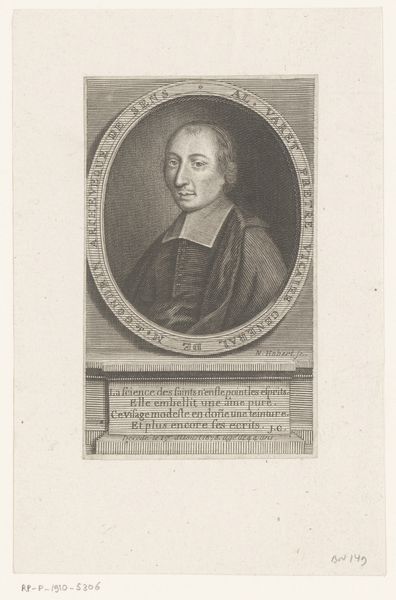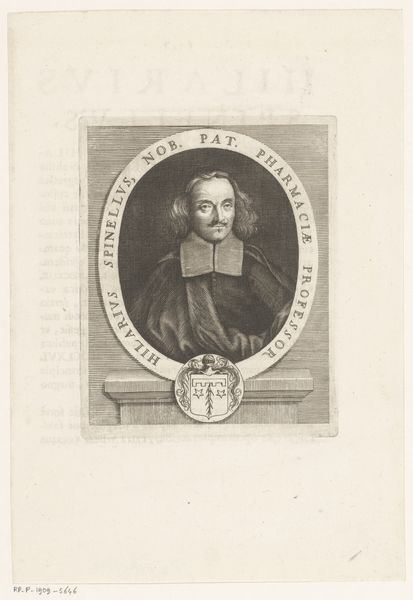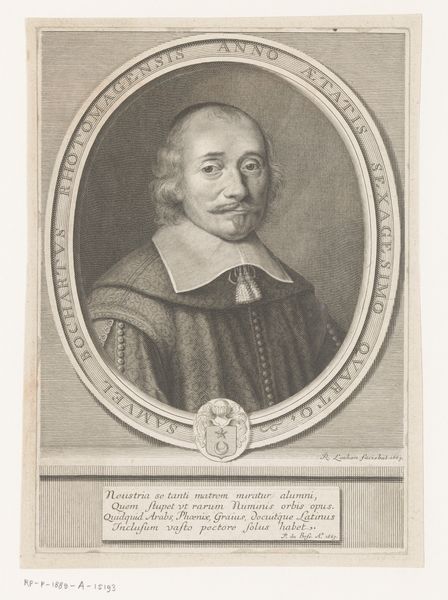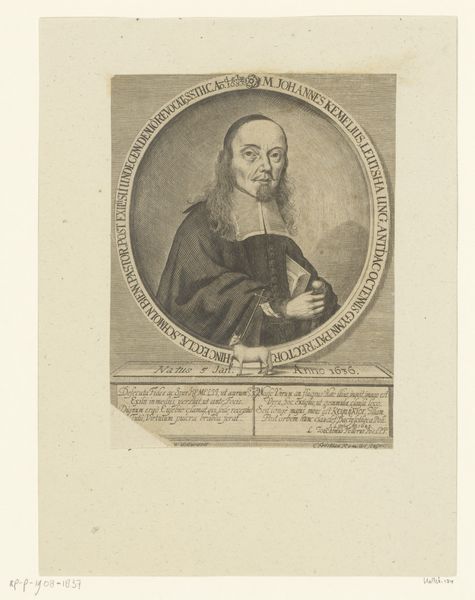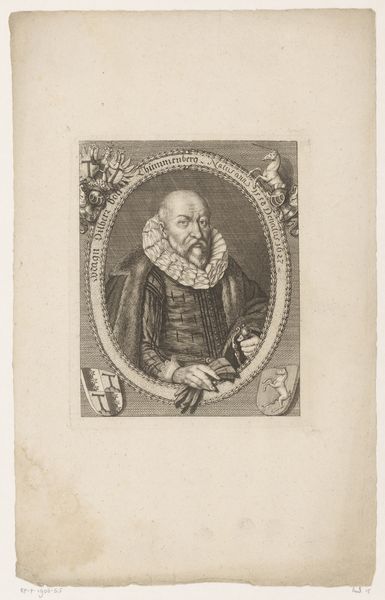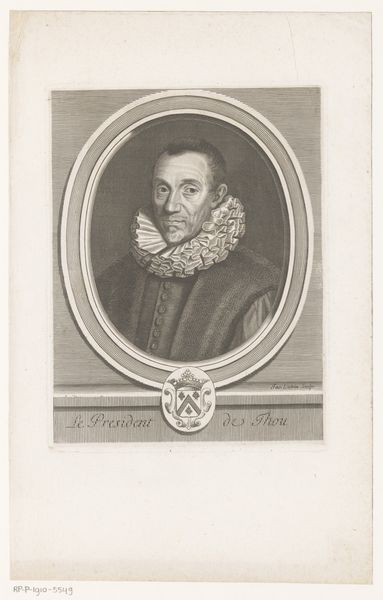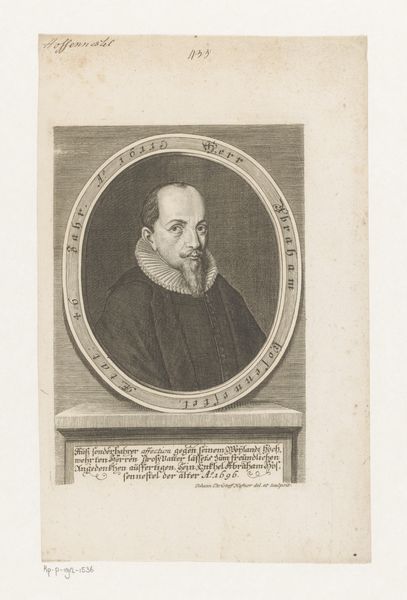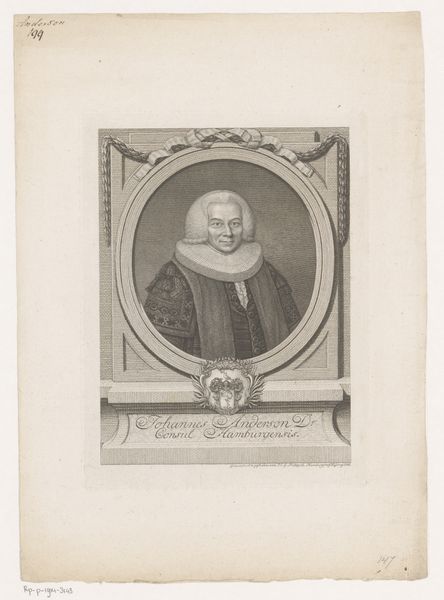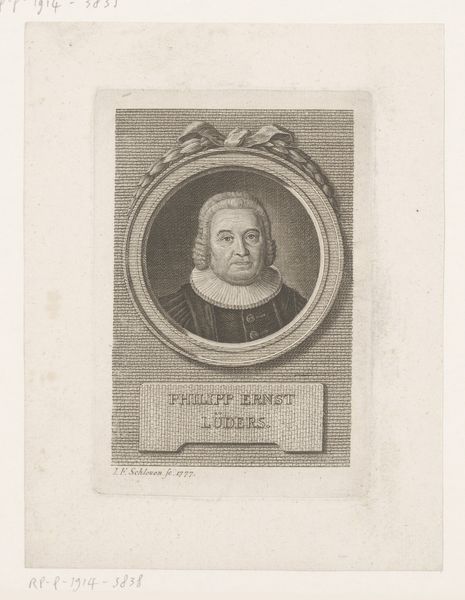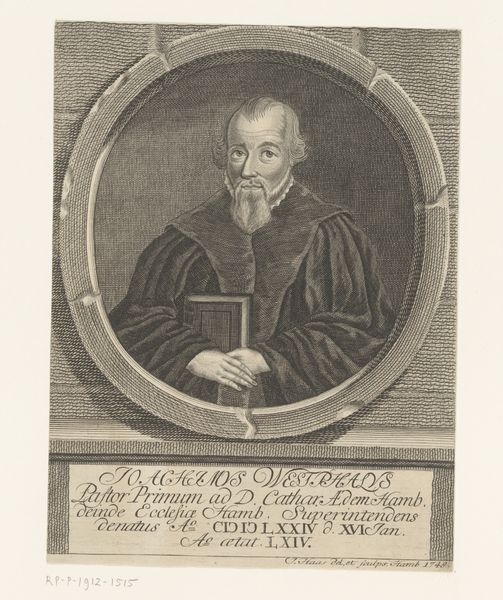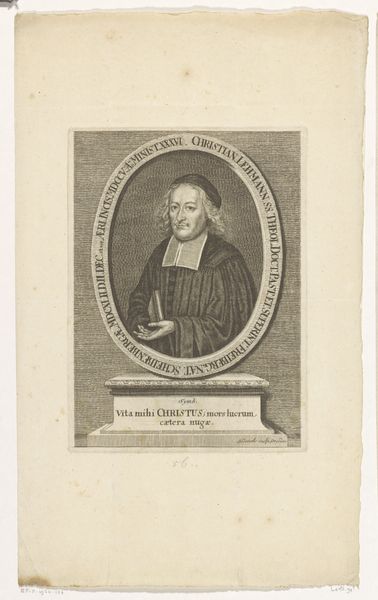
print, metal, engraving
#
portrait
#
baroque
# print
#
metal
#
old engraving style
#
engraving
Dimensions: height 133 mm, width 109 mm
Copyright: Rijks Museum: Open Domain
Curator: Looking at this print, “Portret van Carlo Renaldini,” crafted in 1682, it's remarkable how Martial Desbois captured the essence of his sitter in this metal engraving. The detail, given the medium, is striking. Editor: The face has a warmth, a certain directness of gaze that cuts through the formality of the era, but, it's the surrounding inscription that I find arresting - it's almost a kind of intellectual halo. Curator: Indeed. The text "CAR. RENALDINIVS, ANCON. PRIM. PHILOSOPHIE PROF" literally frames his identity. He was clearly a prominent figure, deeply rooted in philosophy at Ancona. I am curious, what does Ancona Prim Philosophiae Prof communicate to you? Editor: Primarily, his importance, both local and intellectual. Ancona was a port city, a hub. This image then served as a symbolic validation, both recording him and amplifying him to a larger society. Curator: Notice the symbol beneath the portrait, resting on what seems to be a small ledge? Given its position, it's acting like a signature or a seal, encoding more about his lineage, or intellectual affiliations perhaps? These symbolic languages were how reputations were coded and transmitted. Editor: Absolutely, symbols work almost like cultural hyperlinks; triggering a chain of associations, ideas and assumptions about Renaldini and his philosophical school. What's also significant is the print's replicability. Prints allowed for widespread dissemination of images and ideas. What power dynamics are at work here? Who was the intended audience? Curator: Precisely! The print medium suggests a desire to perpetuate his image, and with it, his philosophical legacy. Who decided it should be made and disseminated tells you more about who was served by Renaldini's ideas and legacy. Editor: Thinking about the Baroque style, which is all about drama and grandeur, it's interesting to see it scaled down in a print like this. Here, that baroque impulse towards splendor feels internalized, existing as a restrained statement of philosophical gravitas. Curator: It's like a portable monument. By translating it into the reproducible form of the engraving, Desbois created an icon accessible to those outside Renaldini's immediate sphere. It turns this academic into a symbol of broader intellectual aspirations. Editor: Exactly, the portrait then acts as a tangible affirmation, creating networks of shared recognition and, perhaps even inspiring discourse across various disciplines and territories. This wasn't just about commemorating a man; it's about celebrating the reach of philosophical ideas. Curator: Ultimately, it brings us back to contemplating not just Renaldini’s contribution but the power of images themselves. Editor: Agreed. It highlights the crucial interplay between visibility, representation, and legacy - themes as relevant now as they were in 1682.
Comments
No comments
Be the first to comment and join the conversation on the ultimate creative platform.
